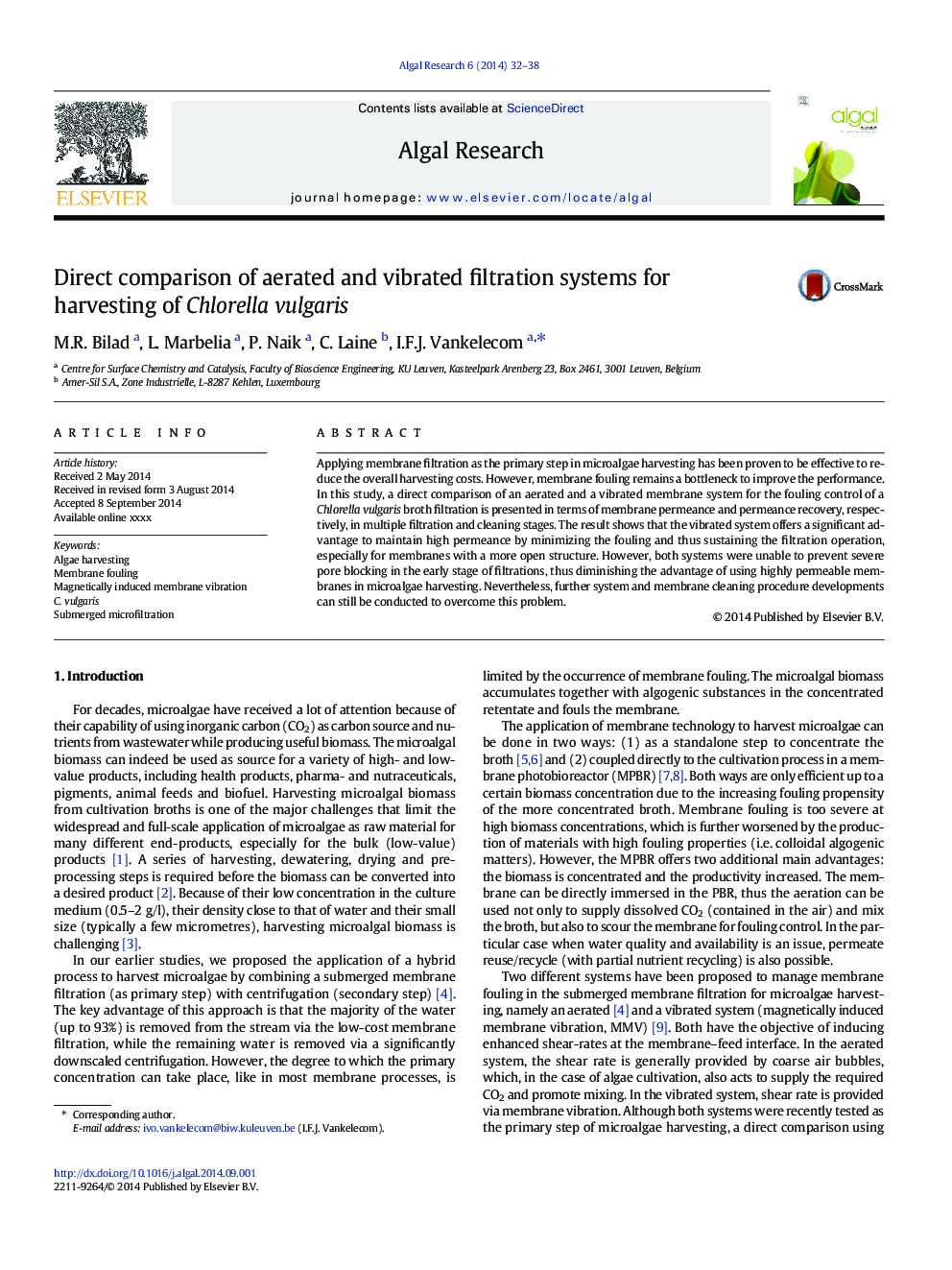| Article ID | Journal | Published Year | Pages | File Type |
|---|---|---|---|---|
| 10687525 | Algal Research | 2014 | 7 Pages |
Abstract
Applying membrane filtration as the primary step in microalgae harvesting has been proven to be effective to reduce the overall harvesting costs. However, membrane fouling remains a bottleneck to improve the performance. In this study, a direct comparison of an aerated and a vibrated membrane system for the fouling control of a Chlorella vulgaris broth filtration is presented in terms of membrane permeance and permeance recovery, respectively, in multiple filtration and cleaning stages. The result shows that the vibrated system offers a significant advantage to maintain high permeance by minimizing the fouling and thus sustaining the filtration operation, especially for membranes with a more open structure. However, both systems were unable to prevent severe pore blocking in the early stage of filtrations, thus diminishing the advantage of using highly permeable membranes in microalgae harvesting. Nevertheless, further system and membrane cleaning procedure developments can still be conducted to overcome this problem.
Related Topics
Physical Sciences and Engineering
Energy
Renewable Energy, Sustainability and the Environment
Authors
M.R. Bilad, L. Marbelia, P. Naik, C. Laine, I.F.J. Vankelecom,
